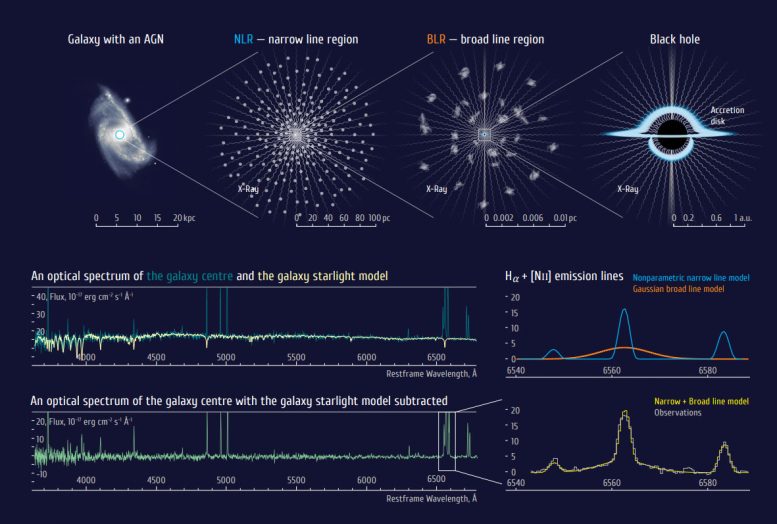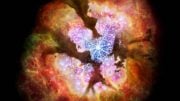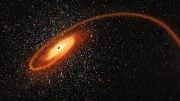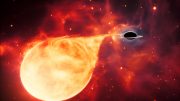
A black hole mass determination in AGN from optical spectra. Top row: A black hole with an accretion disc ionizes
the interstellar medium in its host galaxy. Dense gas clouds in the immediate vicinity of the black hole (0.001–0.1 pc; broad
line region or BLR) are virialized and move at velocities up to thousands km/s, thus broadening recombination lines originating from allowed transitions. Rarefied gas clouds further away from the black hole (∼< 1 kpc; narrow line region or NLR) move much slower (up to hundreds km/s) and emit also in forbidden transitions, however, the narrow line shape depends on the exact NLR morphology. Middle and bottom rows: We model the stellar content of a galaxy by fitting its observed spectrum against a grid of stellar population models; then fit emission line residuals, first by using the same non-parametric shape for all detected lines and then by adding Gaussian broad line components in the hydrogen Balmer lines. If the fitting results differ significantly, we estimate the virial black hole mass from the broad line component width and luminosity using the calibration by Reines et al. (2013).
The existence of black holes is well established, and observations have found both stellar mass sized objects and giant ones millions to billions of times more massive than the sun at the centers of galaxies. But the origin of these massive black holes is a mystery. Small black holes are the ashes of supernovae, but massive ones presumably must start small and grow over time. Such growth is highly constrained, however, because the various act of accreting material generates radiation that inhibits further inflow, and billions of years are thought to be needed to make billion solar-mass black holes. The problem arises because astronomers have now detected quasars with supermassive black holes in the early universe – but there has not been enough time since the big bang for them to grow to supermassive sizes. Stellar-mass black holes, furthermore, should have produced many intermediate-mass black holes as they grew, yet only a few are candidates and their identification as IMBHs remains controversial. The firm identification of IMBHs could help clarify the issue. An alternative suggestion has been advanced to solve the problem. The direct collapse of a large gas cloud in the early universe could produce an intermediate-sized black hole (IMBH) with hundreds to hundreds of thousands of solar masses, leaving plenty of time for them all to grow by now into supermassive objects.
CfA astronomer Igor Chilingarian led a team that has for the first time identified a set of galaxies with active nuclei hosting intermediate-mass black holes. They used optical and near-infrared galaxy surveys to identify candidate sources from the intensity and velocities of their atomic emission lines, selecting three hundred and five likely IMBH candidates. They then obtained X-ray measurements from the Chandra and/or XMM missions which confirmed that ten of these nuclei were IMBHs and were actively accreting. The least massive IMBH they discovered in their set of ten had thirty-six thousand solar-masses; the largest had about ten times more. Their discovery is remarkable not only because it marks the first conclusive detection of these elusive objects, but because it lends credence to the idea that stellar-mass black holes seeded the early universe, with many of them then growing into the supermassive monsters we see today.
Reference: “A Population of Bona Fide Intermediate-mass Black Holes Identified as Low-luminosity Active Galactic Nuclei” by Igor V. Chilingarian, Ivan Yu. Katkov, Ivan Yu. Zolotukhin, Kirill A. Grishin, Yuri Beletsky, Konstantina Boutsia and David J. Osip, 6 August 2018, The Astrophysical Journal.
DOI 10.3847/1538-4357/aad184









Hi I have a question. I was reading about Pair Instability Supernova online aka short for PISN and I was wondering how do you pronounce PISN ? Is it just pronouncing the letters individually like P.I.S.N.?
I read in a science magazine that the black hole developed 1st then the galaxy which makes sense what keeps the gas together stellar growth does not explain supermassive black holes its incorrect and we to find out if expand di g space crunched gas together or what the answer is